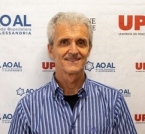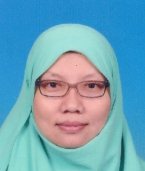
Prof. Paolo Terenziani
University of Eastern Piedmont/Integrated Laboratory of AI and Medical Informatics DAIRI + DISIT, Italy
Paolo Terenziani was born in Turin (Italy) on July 4th, 1963. Since October 2000, he is Full Professor in the Department of Science and Technological Innovation of the University of Eastern Piedmont, Alessandria, Italy. The research activity of Paolo Terenziani has begun in 1987 and it concerns mainly the fields of Artificial Intelligence (knowledge representation, temporal reasoning, conformance analysis, process mining), Temporal Databases (query and data semantics, temporal indeterminacy, periodic data) and of Medical Informatics (clinical guidelines, decision support systems). Regarding these topics Paolo Terenziani has published more than 170 papers in peer-reviewed international journals, books, conference proceedings and workshops (in particular, he has achieved 15 publications on the IEEE Transactions of Knowledge and Data Engineering). As early as in 1998, for his research activity, he won the ¡°Artificial Intelligence Prize¡± from Italian Association for Artificial Intelligence. He has won ¡°distinguished\best¡± paper awards in several international conferences, including AMIA 2012, Chicago, USA, November 2012 (more than 1000 submissions). He is currently the responsible of the Integrated Laboratory of Artificial Intelligence and Medical Informatics of the Alessandria Hospital and the University of Eastern Piedmont, Alessandria, Italy.
Speech Title: "Medical Education about Clinical Guidelines Through AI: Project and Mid-term Results"
Abstract: Artificial Intelligence has the potentiality to innovate education in many areas, including medicine. Since 1996 we work on the GLARE (Guideline Acquisition, Representation and Execution) decision support system, within a long-term project for the design of advanced AI supports for the management of Computer-Interpretable Clinical Guidelines (CIGs). In the two-year project ¡°Personalized Training of Professional Competences with AI¡±, we are investigating the adoption of AI and CIG systems for medical education. We address different tasks related to the adoption of medical knowledge for medical education, including knowledge acquisition, representation and reasoning. Our approach supports three facilities: the navigation of CIGs, their simulated application to virtual patients, and the verification of learners, through an evaluation of the conformance between learners¡¯ recommendations and CIG¡¯s ones. Our approach is domain-independent, and we use the melanoma and the dyslipidemia guidelines as concrete examples. In the last months of the project we are going to held a course for a cohort of more than 50 medical students, distinguishing between a class adopting the developed AI-based tools and a control class. At the end of the project, the learning results of the two classes will be compared.

Asst. Prof. Jiaqing Liu
Ritsumeikan University, Japan
Jiaqing Liu received the B.E. degree in 2016 from Northeastern University, China, the M.E. degree in 2018, and the D.E. degree in 2021, both from Ritsumeikan University, Kyoto, Japan. From 2020 to 2021, he was a JSPS Research Fellow for Young Scientists. From October 2021 to March 2022, he was a Specially Appointed Assistant Professor with the Department of Intelligent Media, ISIR, Osaka University, Osaka, Japan. He is currently an Assistant Professor with the College of Information Science and Engineering, Osaka University, Osaka, Japan. His research interests include computer vision, medical engineering, and deep learning.
Speech Title: "Advancing Depression Detection with AI"
Abstract: Depression is a widespread mental health disorder that significantly impacts global well-being, reducing quality of life, productivity, and overall health. Despite the rapid advancements in AI, current approaches using large language models (LLMs) struggle with integrating multimodal data and providing interpretable insights into emotions and underlying causes of depression. In this talk, I will present our research on a novel prefix-tuning approach that enhances the adaptability of LLMs for depression detection. By fine-tuning only a small subset of parameters, our method enables efficient adaptation while leveraging emotion-pretrained models to improve the detection of mental health indicators. This approach establishes a parameter-efficient and interpretable paradigm for applying LLMs to mental health analysis, offering a scalable solution for advancing AI-driven mental health support.

Senior lecturer Salmah Binti Karman
University of Malaya, Malaysia Salmah Binti Karman (Member, IEEE) received the bachelor’s degree in electrical and electronic engineering from Oita University, Oita, Japan, in 2003, the master’s in engineering science (M.Eng.Sc.) degree from the Universiti Malaya, Kuala Lumpur, Malaysia, in 2011, and the Ph.D. degree from Universiti Kebangsaan Malaysia (National University of Malaysia), Bangi, Malaysia, in 2016. She is currently working as a Senior Lecturer with the Department of Biomedical Engineering, Faculty of Engineering, Universiti Malaya. Her research interest mostly focuses on biosensors and sensing systems. Currently she is actively involved in surface plasmon resonance-based biosensors for virus and bacteria protein detection. The outcome of these studies could be potential in environment safety management especially for infection disease control. She was also involved in molecular imprinted polymer (MIP) based biosensors for DNA detection, potentially applied for halal management systems. Salmah has a significant number of publications in high impact indexed journals and has experience in conducting the high value of project grants. Beside supervising the PhD and master students, she is also actively involved in teaching and learning in the department as part of the profession requirement. Speech Title: "MoS2-COOH Functionalized Gold Film Coated BK7 Prism for Surface Plasmon Resonance Sensing Platform for Viral Protein Detection Abstract: Functionalized films are key components in surface plasmon resonance (SPR) sensing platforms, especially for detecting viral proteins. SPR is a powerful technique that allows real-time, label-free detection of molecular interactions by measuring changes in the refractive index near a metal surface, typically gold. By functionalizing the metal surface with specific molecules, such as peptides, it becomes highly selective to target viral proteins, enabling precise detection. The functionalized film serves as a bio-recognition layer, where viral proteins can bind with high affinity. The viral protein interactions with the functionalized surface result in a measurable shift in the SPR signal, which can be quantified to determine the presence and concentration of the virus. In this study, we present the development of a highly sensitive surface plasmon resonance (SPR) sensing platform utilizing a novel MOS2-COOH functionalized gold film coated BK7 prism for viral protein detection. The unique combination of two-dimensional molybdenum disulfide (MOS2) with carboxyl (-COOH) functional groups, coupled with a gold film, enhances the surface plasmon resonance signal and provides high selectivity for detecting viral proteins. The BK7 prism serves as the optical component for the SPR system, ensuring efficient coupling and signal transmission. The functionalized MOS2 layer facilitates strong interactions with target viral proteins through both electrostatic and covalent bonding, offering enhanced sensitivity and specificity compared to traditional SPR sensors. This innovative approach paves the way for the development of portable, cost-effective, and reliable sensors for early viral infection detection and diagnosis, with potential applications in medical diagnostics, environmental monitoring, and public health surveillance.